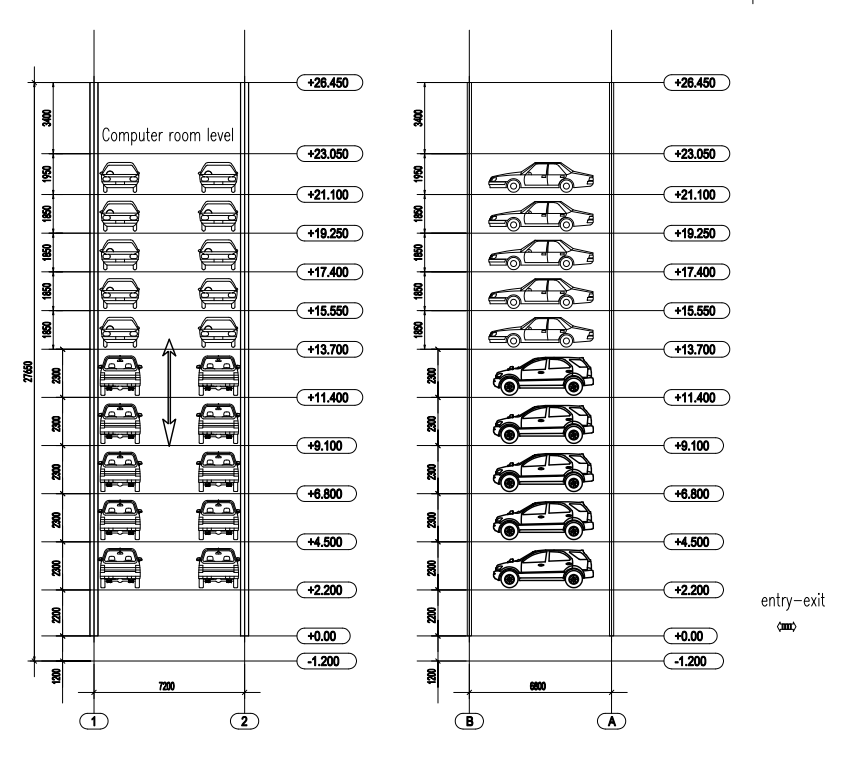This 10-story vertical lift tower parking system is a new type of vertical parking system.
The working principle of the new vertical lifting parking system: before the vehicle drives to the storage room, the automatic fast rolling shutter door is automatically opened by geomagnetic induction, and the vehicle continues to drive to the parking platform in the exchange area on the first floor. The staff walks out and confirms the parking on the touch screen integrated machine; the transporter runs from the transverse transfer trolley to the bottom of the parking lot, lifts the vehicle to the center and transports it back to the transverse transfer trolley, runs to the middle position of the lifting platform, the lifting platform rises, and the transverse transfer trolley rotates at the same time to turn the vehicle around. After arriving at the parking floor, the transporter runs, puts the vehicle on the empty comb parking rack and then returns to the transfer trolley, and the car lift platform descends to the original position to receive the next system instruction, and the vehicle retrieval action is reversed.
Its core advantages are reflected in space utilization, automation, safety, and applicable scenarios:
1. Efficient use of space to alleviate parking problems
2. Automated operation, convenient and time-saving
3. Safe and reliable, protecting vehicles and personnel
4. Environmental protection and energy saving, reducing operating costs
5. Adapt to a variety of vehicle models and a wide range of application scenarios
6. Enhance the city's image and support the construction of smart cities
Vertical lifting stereo garages effectively solve urban parking problems through the characteristics of space intensiveness, intelligent operation, and efficient management. They are especially suitable for scenarios with high requirements for land utilization, automation, and safety. With technological advances and cost reductions, this type of garage is becoming an important part of modern urban parking systems.

FAQ:
1. Q: What is the main advantage of a vertical lift parking system?
A: Its key benefit is high land utilization, as it can store 20-50 vehicles in a small footprint, reducing parking space needs by up to 90%.
2. Q: How long does it typically take to retrieve a vehicle?
A: Retrieval usually takes less than 90 seconds thanks to automated lifting and traversing mechanisms.
3. Q: Are vertical lift parking systems safe for vehicles?
A: Yes, they are. The enclosed structure protects cars from weather damage, and automated operation eliminates human-driven collision risks.
4. Q: What types of vehicles can these systems accommodate?
A: Most systems fit standard cars, SUVs, and some can handle vehicles up to 5.5 meters long and 2.2 meters high.
5. Q: How do these systems contribute to environmental sustainability?
A: They reduce energy use by 30–50% with variable frequency drives and minimize the need for expansive surface parking, conserving urban green spaces.





















